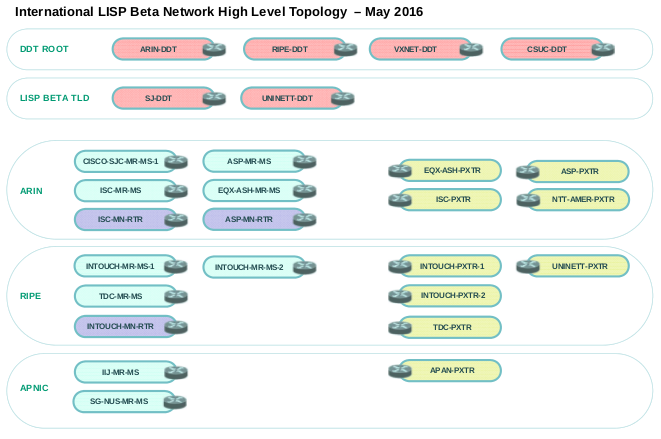To see the latest news regarding LISP please visit the News section.
Introduction to LISP
LISP is a network architecture and set of protocols that implements a new semantic for IP addressing. In a nutshell: LISP separates the ‘where’ and the ‘who’ in networking and uses a mapping system to couple the location and identifier.
In the current Internet routing and addressing architecture, the IP address is used as a single namespace that simultaneously expresses two functions about a device: its identity and how it is attached to the network. One very visible and detrimental result of this single namespace is manifested in the rapid growth of the Internet’s DFZ (default-free zone) as a consequence of multi-homing, traffic engineering (TE), non-aggregatable address allocations, and business events such as mergers and acquisitions.
LISP solves these problems by introducing a separation between the ‘who’ and the ‘where’. LISP follows a network-based map-and-encapsulate scheme, this means no changes to hosts are needed, everything happens in the network. Also, in LISP, both identifiers and locators can be IP addresses or arbitrary elements like a set of GPS coordinates or a Mac address.


